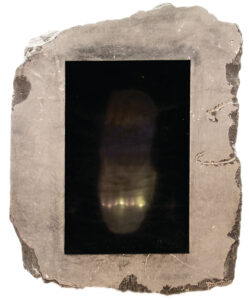Rabbi Alexandra Wright
This week we conclude our reading of the Book of Exodus with Va-yakheil-Pekudey, a double parashah that introduces us to the designers and craftsmen and women of the Tabernacle. Donations contributed by the Israelites are used for the coverings, the furniture, the appurtenances and the priestly vestments. Not one detail of their design is omitted, and the book ends with the placing of the tablets into the ark, the poles affixed to the ark which is then brought inside the Tabernacle. The lamps are lit on the menorah and incense is burned on the altar together with the burnt offering.
This ending of the Book of Exodus is not really an ending, but an intersection between the great narrative which gave birth to the Jewish people, the Exodus from Egypt, the entry into the Covenant at Sinai, and the third book of the Torah, Leviticus, which we shall begin reading next week.
What do we learn from this transition, from the cloud of unknowing, symbolising the Divine Presence resting on the Mishkan, to the Voice that calls to Moses, and speaks to him out of the Tent of Meeting at the beginning of the third book of the Torah? Why should the opening verses of Leviticus that deal with nothing more than the cultic rules of sacrificial worship – whether of cattle or sheep, turtle doves or pigeons, burnt offerings for atonement, brought to the priests near the altar and the whole blood-drenched slaughter that is then smoked on the altar – come immediately after the majestic, mystical verses of the end of Exodus. Does not the end of Exodus point to the future journeys embarked upon by the Israelites? Why then not continue with the Book of Numbers and the journey of the refugees through the wilderness? Would that not be a more logical progression, rather than intercept the narrative with long, tedious lists of different types of sacrifices?
What is the purpose of this juxtaposition of mysticism and magic, fire and blood, the ethereal beauty of the Tabernacle with its richly coloured and textured hangings, gold, silver, copper and bronze, the mirrors of the laver reflecting the outer court of the enclosure, and the chaotic, noisy, fearful theatre of the cult – dead animals brought to the priest who lays his hands on their heads to make atonement for his own sins and the sins of his people?
I am moved by the closing verses of Exodus – the cloud covering the Tent of Meeting, the Presence of God filling the Tabernacle, so that even Moses is unable to enter. There is majesty and silence and profound beauty in these words that mirror the order and magnificence of the creation narrative.
So, is it surprising that the first chapters of Leviticus feel like a violent intrusion, where one animal is slaughtered after another, where the priests are dashing blood, flaying burnt offerings, sending up pieces of some hapless creature in the fire – head and suet smoking, drenched in incense to extinguish the odour of blood and guts.

Sir Anish Kapoor, who created the massive limestone sculpture commemorating the Shoah at The Liberal Jewish Synagogue (pictured), reflected on the impossible challenge of conceptualising the unimaginable in a lecture which he gave at the synagogue on Kristallnacht 2021, to mark the 25th anniversary of the sculpture’s installation. We hold within us, he said, two opposing modalities:
‘We human beings hold within us a deep beauty and deep violence. Beauty is around us at every moment and yet somehow, we too often fail to see it, or cannot allow ourselves to see it. Violence is with us as a constant. Violence is the inarticulate, unspoken, or unrecognized known. Violence sits within us waiting to pounce, it readily finds voice in collective acts of horror, political and communal. And yet, violence is deeply generative. It has a pivotal role to play in the formation of art.’[1]
Beauty and violence are ‘inextricably linked’, says Anish Kapoor. Violence can lead to terrible acts of brutality and harm, but also to the disavowal of violence – witness the peaceful protests that are taking place in Israel at the moment, protests against the ugliness of nationalism and racism. And violence can also lead to the creation of some of the finest works of art. ‘Beauty and violence are in a psychic continuum.’
We live within this continuum daily, perhaps more aware of one rather than another in a world that is hurt and troubled. Yet, it is in our synagogues and communities that we can find beauty in the intimacy and warmth of relationships, in the comfort of prayer and music, in the regular occurrence of Shabbat and our festivals, in times of contemplation and reverie.
Perhaps the messianic vision of a perfect world envisaged by the architects of Liberal Judaism, a progressive world that would leave behind violence and imperfection, exerts a pressure that is impossible for us to achieve, let alone consider. Perhaps Anish Kapoor’s continuum of beauty and violence reflects more accurately humanity’s capacity for both – for creativity, tranquillity and peace, and for harm and annihilation. These twin modalities may seem to be in a constant dialectic, in opposition to each other, but they also create the possibility of transformation – a creative spirit at work within the uncertainties of our world, an uncovering of its mystery, beauty and light.
[1] https://images.shulcloud.com/1575/uploads/PDFs/LJS-NEWS-PDFs/2022-JAN-FEB-LJS-NEWS.pdf
Share this Thought for the Week
